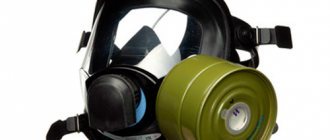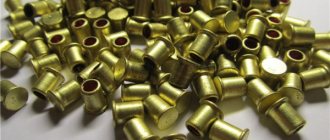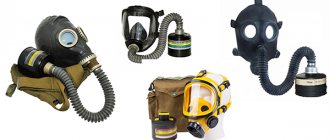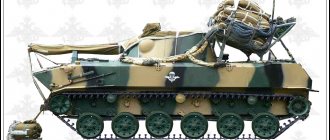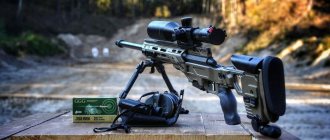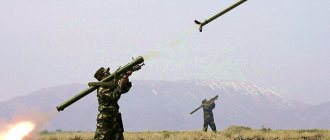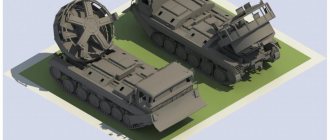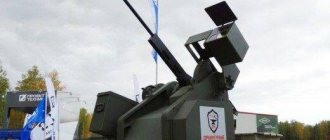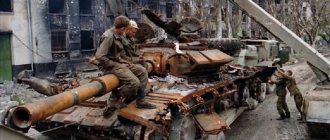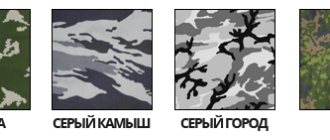- — Types of gas masks
- — Device markings
- - Areas of use
- — Panoramic masks
- — Device requirements
- — Rating of gas masks
- — Which gas mask is better to choose?
Gas masks are personal protective equipment that are used to protect the respiratory system, vision and facial skin from dangerous gases and volatile substances.
They provide security to civilian and military specialists, as well as industrial workers. Gas masks are required in case of disasters at large technical facilities. Human life and health depend on the quality and reliability of personal protective equipment. Among the huge number of gas masks, it is not easy to choose the best model, so this top was created. Gas masks have several classifications depending on the area of application and features of the equipment. But regardless of the type, the device must meet safety requirements.
According to the internal structure and method of protection, devices are divided into two types:
- Filtering
include a filter box that protects the body mechanically or through neutralizing chemical reactions. They allow you to breathe air that is cleaned inside the filter. The air must contain at least 18% oxygen. The peculiarity of filter boxes is that they prevent only special types of threats, i.e. they are not universal. Filters require replacement as they are used. The validity period of the boxes depends on the level of air pollution and lasts from several minutes to several days.
- Insulating
include a compressor box, which is universal compared to the filter box. Used when there is a lack of oxygen. An external source of clean air is connected to the device.
In turn, insulating materials are divided into several types:
- Self-contained breathing apparatus
with a compressor box containing a cylinder of compressed air.
- Hose respirators
, in which air is supplied through a hose from an external source, for example, a compressed air pipeline.
Filters are designated by different markings. The level of protection is indicated by numbers:
- 1
– protection against low concentrations of volatile substances (up to 0.1%).
- 2
– protecting the body from ingestion of substances with a concentration of up to 0.5%.
- 3
– protection from substances with concentrations higher than 1%.
In addition to the digital designations, filter gas masks have letter markings:
- R
(white box) – from foreign particles flying in the air. P1 prevents large particles from entering the body, and RZ prevents from mist suspensions, bacteria, etc.
- A
(brown box) – from organic gases and vapors with a boiling point above 65˚C.
- OH
(brown box) – from the ingestion of organic gases and fumes with a boiling point below 65˚C.
- IN
(gray box) – from all inorganic gases, except carbon dioxide.
- CO
(purple box) – from carbon monoxide.
- E
(yellow box) – from fumes of nitric acid and acid gases.
- TO
(green box) – from vapors of ammonia derivatives.
- NO
(blue box) – from all nitrogen oxides.
- Hg
(red box) – from mercury vapor and its compounds.
- Reaktor
(orange box) – from radioactive substances.
- SX
(purple box) – from chemical warfare agents.
Depending on the area of application, devices are divided into several types:
- Military
. They are characterized by high safety and versatility to substances.
- Civil
. They differ from military ones in that they are made from cheap and low-quality materials. Used by the population during emergencies.
- Industrial
. The device is built into a protective suit. Used when working with hazardous substances.
- Children's
. They are small in size.
Panoramic masks with a high degree of protection are also distinguished
. Their advantage is that they have a larger viewing angle compared to gas masks. The disadvantage is that they do not completely cover the head, so they require additional use of a protective suit. Panoramic masks are used with filters of different brands and classes. The kit consists of panoramic glass, a seal with a seal for a tight fit to the face, a valve box with an inhalation and exhalation valve, an intercom, a mask holder, a headband with several attachment points on the head, one or two side units for connecting to filters. Gas masks with panoramic glass are most preferable.
Requirements for choosing a gas mask:
- Correspondence GOST
.
- Compliance with the scope of application.
- Price category
varies. But, as a rule, this type of personal protective equipment costs no more than 4 thousand rubles.
- The filter on gas masks is located on the front part
. Depending on the model, it may be on the left, right, center or on both sides. When the filter is positioned on the side, the gas mask may shift to one side, which causes harmful substances to enter the respiratory system, eyes or skin. Side filters are recommended for military specialists who conduct targeted fire. Civilian gas masks must be equipped with two small filters on both sides or one large central one.
- Filter
must correspond to
the nature of the substances
. - Field of view area of gas masks with panoramic glasses
must be at least 70%. For devices with flat round glass, this value is reduced by 36-38%.
- Filter housing material
must be polymer or metal. Modern models are impact-resistant and heat-resistant.
Rating of the best gas masks
Based on regulatory requirements, price-quality ratio and expert and user assessments, a rating of the 15 best gas masks for 2022 was compiled.
| Model name | Purpose | View | Rating | Price, ₽ |
| 1. PMK-3 | Military | Filtering | 9,8/10 | 1200 |
| 2. Unix 6100 | Industrial | Panoramic mask | 9,7/10 | 6600 |
| 3. SMG "Nerekhta" | Military | Filtering | 9,5/10 | 1200 |
| 4. GP-7B | Civil | Filtering | 9,5/10 | 3990 |
| 5. GP-7VM | Civil | Filtering | 9,2/10 | 1000 |
| 6. PPF-1 | Industrial | Panoramic mask | 9/10 | 2900 |
| 7. MPG-IZOD | Industrial | Panoramic mask | 9/10 | 2000 |
| 8. PFSG-98 with MAG | Military | Filtering | 8,8/10 | 3300 |
| 9. BRIZ-4301M | Industrial | Panoramic mask | 8,5/10 | 1600 |
| 10. GP-21U | Civil | Filtering | 8,3/10 | 4000 |
| 11. GP-5 | Civil | Filtering | 8/10 | 500 |
| 12. MZS VK MAG-3L | Civil | Filtering | 8/10 | 4000 |
| 13. IP-6 | Military | Insulating | 7,8/10 | 14900 |
| 14. KIP-8 | Industrial | Insulating | 7,4/10 | 4600 |
| 15. M2000 | Military | Filtering | 7,2/10 | 12000 |
Which gas mask should I buy for my home?
subject I want to put it in the PM, just in case. Does it make sense to buy Soviet gas masks, or are they already expired?
The filters are expired, but they will last for a while. I personally bought a GP-7 from the 90s. The most normal budget gas mask. The main thing is to make sure that the mask is undamaged and fits properly. Well, you can buy new cans, but the price tags on them are ridiculous.
It’s better to take PMK-3 and buy VK-450 filters. a little expensive, but this is the best of all Russian RPE
bear
The filters are expired, but they will last for a while. I personally bought a GP-7 from the 90s. The most normal budget gas mask. The main thing is to make sure that the mask is undamaged and fits properly. Well, you can buy new cans, but the price tags on them are ridiculous.
you need to know where to buy gas masks. the same GP-7 compared to PMK-3 is fabulous crap. I’m already silent that now the GP-7 with a “native filter” has been banned for staffing shelters. Only with an additional cartridge or an industrial filter, since the GP-7k filter does not protect against ammonia and a number of hazardous chemicals, and according to new standards, gas masks located in civil defense shelters must protect against EVERYTHING
The house shouldn't smell so bad that you need a gas mask.
liutyy
It’s better to take PMK-3 and buy VK-450 filters. a little expensive, but this is the best of all Russian RPE
Thank you, I also thought about PMK-3
Now the most important question is: is it worth taking gas masks and filters from storage? Well, with filters it’s more or less clear, newer ones are better. What about the gas masks themselves? Now the price for decommissioned PMK-2, for example, varies from 400 to 700 rubles. And PMK-3 is sold from 2000-2009.
Is it worth buying gas masks from ten years ago?
trevaga.su
Is it worth buying gas masks from ten years ago?
liutyy
according to new standards, gas masks located in civil defense shelters must protect against EVERYTHING
To calm the soul, to know that there is at least something for the population. Well, there will be some kind of hope for people; if an alarm is declared, there will be somewhere to run. It doesn’t matter whether they dig it up later or not. The main thing is that everyone will know: here and there there is food and means of protection.
15. M2000
On the fifteenth line is the M2000 model. Used against radiation particles, chemical and biological toxic substances. Produced in Germany in . One of the most expensive models on the list.
The M2000 may include removable glasses for vision correction, glasses to protect the eyes from radiation from nuclear explosions, glasses to protect the eyes from laser and solar radiation, a tube for receiving water and liquid food, and an overpressure valve. Often used in conjunction with protective suits.
Pros:
- Material – polymer.
- The filter has a central position.
- The viewing angle is at least 70˚.
- Glass replacement is possible.
- Low breathing resistance.
- The presence of a drinking tube.
- Subject to all types of disinfection.
- Service life – 20 years.
Minuses:
- Doesn't protect the entire head.
- High price.
- Unpopular model in Russia.
- Small quantity in Russia.
Respirators
Respirators are used to protect the respiratory system from radioactive and ground dust and when operating in a secondary cloud of bacterial (biological) agents.
The respirator is a filtering half-mask equipped with two inhalation valves, one exhalation valve with a safety screen, a headband consisting of elastic bands, and a nose clip.
Respirators are manufactured in three sizes, the selection is carried out according to the sizes, which are determined by measuring the height of the face (the distance between the point of greatest deepening of the nose bridge and the lowest point of the chin).
14. KIP-8
Fourteenth place is occupied by KIP-8. It is used against gaseous environments and when there is a lack of oxygen. Produced in Russia.
KIP-8 belongs to the group of lung-power breathing apparatus with a combined oxygen supply and a closed breathing pattern, in which exhaled air is not removed, but circulates inside the device. Equipment: helmet-mask, valve box, breathing bag, regenerative cartridge RP-8, oxygen cylinder with valve, lung demand valve and reducer unit, sound signal unit, breathing bag valve (safety), remote pressure gauge, inhalation and exhalation corrugated tubes, housing with cover and straps.
Pros:
- The duration of wearing a gas mask at an average load is about 1.5 hours.
- Central filter location.
Minuses:
- Relatively high cost.
- Unpopular model.
- Small quantity in Russia.
Isolating personal protective equipment for respiratory organs
Insulating type RPEs do not use ambient air to ensure human breathing in an extreme situation, this is their fundamental difference from respirators.
These protective equipment must provide a person with the opportunity to breathe air that is not directly related to the environment. Depending on the method of providing this opportunity, they are divided into:
- self-contained breathing apparatus, which already contain in their design a certain supply of air, allowing them to maintain breathing function for a limited time in the most difficult conditions;
- hose respirators, into which air is supplied through a hose from an external source.
Self-contained respirators
Self-contained respirators can use for breathing air compressed by a compressor to high pressure, which is supplied continuously, either on demand or under pressure:
- With continuous supply, air is supplied under the front part at a constant flow rate, regardless of its consumption. The protective properties of respirators with a given air flow depend on how tightly the front part fits to the face.
- When air is supplied as needed, when inhaling, the pressure under the mask decreases, becoming below atmospheric pressure, which opens the air supply valve. But due to the pressure difference under the mask, contaminated air can leak through the gaps, so such respirators have a low expected degree of protection.
- When supplying air on demand under pressure, air is released from the mask to the outside when the excess pressure in the mask exceeds a predetermined value. In this case, air is supplied under the mask not when the pressure there becomes below atmospheric, but when its value is below a certain specified value of excess pressure. Therefore, with such respirators, the pressure inside the mask is always higher than outside. This condition does not allow contaminated air to leak under the mask, so such respirators have a high expected degree of protection.
When using self-containing hose respirators, it is necessary to provide in advance for the possibility of safe exit of workers from a contaminated area in the event of interruptions in the air supply. For this purpose, a hose respirator can be used in combination with a small breathing apparatus, which contains enough air for such a maneuver.
Hose respirators require a powerful compressor to operate; sometimes a manual or electric blower can be used to supply air. Sometimes such devices use non-compressed air, which can flow under the mask due to the vacuum created by the worker when inhaling, but such a respirator is the least reliable.
Self-contained breathing apparatus
Self-contained breathing apparatus (SCBA) is available in open and closed circuit. In open circuit breathing apparatus, exhaled air is released into the atmosphere and new air is used instead. In devices with a closed circuit, exhaled air is purified and enriched with oxygen, after which it is reused for breathing. The first ones are simpler, while the second ones weigh less and have a longer service life.
Breathing apparatus with an open circuit for supplying air have a certain supply of it in cylinders. Air supply under the mask can be on demand or on demand under pressure. In the latter case, as with a hose respirator, the degree of protection of the respirator is noticeably higher.
Closed-circuit breathing machines use chemicals that absorb carbon dioxide to remove carbon dioxide from exhaled air. To enrich the air with oxygen, chemically bound oxygen can be used, which is released from a special chemical substance under the influence of moist exhaled air, or there is a cylinder with compressed oxygen. When working in high temperature conditions, for example in deep mines, a supply of liquefied oxygen can be used.
Respirators of various designs have different degrees of protection, so it is important to take this fact into account when choosing the type of personal protective equipment correctly. To achieve this, all respirators are certified to ensure their quality and proper use in accordance with specific conditions, which is regulated by regulatory documents
IP-6
In thirteenth place is the insulating gas mask IP-6. Used against any harmful impurities in the air, regardless of their concentration, as well as when working in conditions of lack of oxygen in the indoor air. Produced in Russia.
The device consists of a front part MIA-1, a regenerative cartridge RP-6, a corrugated tube, a breathing bag, a cover, an overpressure valve, a shoulder and waist belt, and a case. The protective action time when performing emergency rescue operations is at least 40 minutes, and at rest is at least 150 minutes. Withstands the average range of ambient temperatures - from -20˚С to +50˚С.
Pros:
- Operation in medium temperature range.
- Protects against many types of substances.
Minuses:
- High price.
How to use it correctly
The protective functions of an individual filter product depend not so much on the chosen model, but on proper use and dressing.
There are 3 main options for wearing protective equipment:
- Pokhodnoe. Used in a non-hazardous situation where there is no risk of infection. The gas mask in this position is usually worn at waist level on the left.
- Ready. It is used in situations where an “Alarm” warning signal is given, as well as when there is an existing threat of chemical weapons entering the environment. You should begin to unfasten the valve, then secure the device with a special cord.
- Combat. This option is applicable when using the “Gases” command or in a situation where the first symptoms of contamination of the area with chemicals are detected or a “chemical alarm” is declared.
You need to wear a gas mask according to certain rules. Grab the mask with both hands by the straps, with your thumbs inside. Tilt your head forward slightly. Bring the bottom of the gas mask to your chin and pull it over your face. Tuck the ties located on the sides of the helmet behind the ears. Tighten the neck cords. The mask should fit tightly around the entire face.
If you need to put a gas mask on an injured or unconscious person, it is more convenient to do this by kneeling down. Lift his head and place it on your lap. If possible, it is better to put the injured person in jail. Take the mask out of the bag, grab the bottom of it with your hands and bring it to your chin.
MZS VK with front part MAG-3L
On the twelfth line is the MZS VK model with the front part MAG-3L. It is used to ensure the implementation of civil defense and emergency rescue activities in special conditions of chemical, biological contamination and radioactive contamination. Produced in Russia.
The device includes the front part of MAG-3L, a combined filter and a storage bag. Suitable for use in any climatic conditions from -40˚С to +40˚С. Wide field of view – from 70%.
Pros:
- The panoramic mask increases the viewing angle.
- Possibility of operation under unfavorable environmental conditions.
Minuses:
- High price.
- Lateral placement of the filter.
Industrial filter gas masks
They differ in the types of substances from which they protect and in the protection class. The type of substances in the labeling is indicated by the letters A (organic), B (inorganic), E (acidic vapors and gases), K (ammonia) (for special filters Hg, CO, NO, SX are also added).
The protection class is indicated by numbers from 1 to 3; the higher the number, the higher the protective properties.
Filters are divided into combined and gas - combined filters are equipped with an anti-aerosol filter of the 3rd protection class and P3 is added to the marking.
Depending on the frequency of use, filters are either disposable or reusable – reusable ones are marked with the letter D.
The protective action time of an industrial gas mask filter depends on the filter’s protection class (the higher the class, the longer) and the concentration of chemicals (the higher the concentration, the shorter the protective action time). Reusable filters should be stored with the cap and cap closed after use.
How can you tell if a gas mask filter no longer provides protection and needs to be replaced? – by the appearance of odor, because All gases have an unpleasant odor, so when the filter begins to lose its protective properties, an unpleasant odor will appear. An exception is filters with protection against carbon monoxide (carbon monoxide, CO), the suitability of which for protection against carbon monoxide is determined by the weight of the filter - the weight gain cannot exceed 20 grams.
Industrial filter gas masks produced by JSC Tambovmash
They are produced in complete sets with front parts ShMP-1, ShM-2012 and panoramic masks MAG and PM-88.
Depending on the configuration, the filters are small in size - PPF-5M, medium in size - PPF-5S and large in size PPF-5B. Filters weighing up to 500 grams are connected to the front part directly, more than 500 grams using a corrugated tube.
The range of filters included in the PPF package is represented by the following brands: filter FG-5M brand A2/ B2/ K2/ A2AX/ V2K2, filter FG-5MU brand A2B2E2K2, filter FK-5M brand A2P3D/ B2P3D/ K2P3D/ B2E2P3D/ B2K2P3D / A2AKhP3D, filter FK-5MT brand A2B2E2AKhP3D, filter FK-5MT brand A2B2E2K2P3D, filter FK-5MT brand A2B2E2K2AKhP3D, filter FG-5S brand A3/K3, filter FK-5S brand A3P3D/K3P3D, filter FG-5B brand B3/A3AX, filter FG- 5B brand А3В3Э2К2, filter ФК-5Б brand А3АХР3D/ В3Р3D/ В3К2Р3D/ В3Э3Р3D, filter ФК-5Б brand А2В3Э3АХР3D, filter ФК-5Б brand А3В3Э2К2Р3D, filter ФК-5Б brand А2В2Э2К2COSXР3D, filter ФК-10РШ brand А3В3Э2 AKhP3D, filter FK-5B brand A2B2E2K2COSXNOP3D, filter FK-5MT A2B2E2K2HgP3D, FK-5B brand HgP3D.
The name of a specific gas mask model consists of the name industrial filter gas mask - PPF-5, filter dimensions M, S, B (PPF-5M, PPF-5S, PPF-5B), name of the front part and filter brand, for example, PPF-5M with front part of MAG with FK-5M brand A2P3D.
Industrial filtering gas masks produced by Sorbent JSC
GP-5
In eleventh place is a model that is already considered a classic, GP-5. They are used against toxic substances, impurities, radioactive dust and biological (bacterial) aerosols. Produced in Russia.
The GP-5 gas mask consists of a filter-absorbing box and a front part (helmet-mask) ShM-62u or ShM-62. The front part consists of a rubber body with fairings and glasses, a valve box (K-62) with inhalation and exhalation valves. There is no connecting tube. In addition, the kit includes a bag for a gas mask and anti-fog films.
Pros:
- Low cost.
- Field of view area - at least 42%.
Minuses:
- Outdated model.
- Material: rubber.
Donning standards and common mistakes
The product is put on at the command “Gas!” . Immediately after such a command, they hold their breath and close their eyes; take the gas mask out of the bag, remove the plug from the filter box.
The helmet-mask is taken with both hands by the lower part, which has thickened edges.
In this case, the thumbs should be on the outside of the mask, and the rest should be on the inside. The lower part of the helmet-mask is placed under the chin and with a quick movement of the hands in the up-and-back direction, the helmet-mask is pulled over the head, ideally evenly and without folds.
Glasses should be at eye level . Having adjusted the mask to eliminate the distortion and eliminate folds if they have formed, exhale completely, open your eyes - and breathe in purified air.
The standard for performing all these actions with an “excellent” rating is seven seconds . Nine seconds is a “good” rating, and ten seconds is “satisfactory”.
Common errors, after one of which the standard score is reduced by 1 point:
- when putting on, the eyes were not closed or the breath was not held;
- after donning, full exhalation is not performed;
- The helmet-mask misalignment has not been corrected.
In a real combat situation, any of these mistakes can be fatal : by not holding your breath before putting on a gas mask, and not exhaling after putting it on, you can get poisoned before you even begin to act.
Folds and distortions violate the tightness and damaging factors easily penetrate under the helmet-mask.
10. GP-21U
In tenth place is GP-21U. Used against toxic substances, radioactive dust, biological aerosols, radioisotopes of iodine and its organic compounds, hazardous chemical substances and hazardous chemical substances of inhalation action. Produced in Russia.
The device includes an MP-3 front part, a filter in a metal case and a storage bag. The mask is panoramic. Suitable for use in any climatic conditions from -40˚С to +40˚С.
Pros:
- Combines with many other means of protection.
- Large viewing angle – from 70%.
- Made from high quality materials.
- Long service life.
Minuses:
- High price.
- Side connection of the filter, which is undesirable for civilian gas masks.
Characteristics of the civil gas mask GP-7
- The weight of the basic GP-7 kit without a bag is no more than 900 g.
- The weight of the FPC is no more than 250 g.
- The weight of the mask is no more than 600 g.
- Field of view – no less than 60%
- The overall dimensions of the device folded into a bag are approximately 285 x 210 x 115 mm.
- Operating temperature range - -40 to 40 °C
- Air resistance during inhalation at a flow rate of 30 dm3/min is no more than 18 mm. water Art.
- The carbon dioxide content in the received air is no more than 1%
- Resistance of the mask during breathing at an air flow of 30 dm3/min: when inhaling - no more than 2 mm of water. Art., when exhaling - no more than 8 mm of water. Art.
- The penetration coefficient of the SMT aerosol under the mask is no more than 0.001%
- The penetration coefficient of SMT aerosol into the FPC is no more than 0.001%
- The penetration coefficient for radioiodine vapor is no more than 0.01%;
Top 5 smallest pistols in the world
READ MORE: GP-9 gas masks, use of a civilian gas mask, care and storage
9. BRIZ-4301M
On the ninth line is the BRIZ-4301M model. Used against vapors, gases or aerosols. Produced in Russia.
The set includes a panoramic view glass, an intercom, a self-tightening headband, and an independent shutter. The design guarantees good audibility and speech intelligibility, and does not reduce a person’s performance when performing work of any severity throughout the entire work shift. Suitable for use in any climatic conditions from -40˚С to +40˚С.
Pros:
- Viewing area more than 70%.
- Can be used in adverse weather conditions.
- Low price.
Minuses:
- Doesn't completely protect your head.
Features of use
A filter gas mask has a negative effect on the body. It is determined by:
- Breathing resistance increases when working.
- Limitation of field of view.
- The presence of space in the facial area filled with part of the exhaled air enriched with CO2.
- The pressure of the mask on the fabric.
- Difficulties in perceiving sound and transmitting speech.
Filtering gas masks reduce performance, but do not prevent the continuation of activities of a production or combat nature. To increase endurance, you need to exercise regularly. In low temperatures and windy conditions, protection against possible frostbite must be provided under the mask in the neck and chin area.
PFSG-98 with MAG
In eighth place is the PFSG-98 model with MAG. Used against harmful gases and vaporous substances and aerosols (dust, smoke, fog). Produced in Russia.
The package includes a MAG panoramic mask, a DOT or VK filter, a connecting tube and a storage bag.
Pros:
- Compliance with the requirements of standards: TR TS 019/2011, GOST 12.4.041-2001, GOST 12.4.235-2012, GOST 12.4.246-2013, GOST R 12.4.189-99, GOST 12.4.166-85, EN 136.
- Large field of view.
Minuses:
- High price.
Industrial filter gas masks with threaded connection
Filtering gas mask PFMG-96 (small size filtering gas mask) is equipped with filters DOT 220 brand A1B1E1P3D, DOT 250 brand A1, DOT 250 brand A1B1E1, DOT M 460 brand A1B1E1K2SO15SX, DOT 460 brand K2, DOT 460 brand A2B2E2, DOT 460 grade A2B2E2AX.
Filtering gas mask PFSG-98 (medium size filtering gas mask) is equipped with filters DOT M 600 brand B2E2K2SO20SX, DOT M 600 m.B2E2K2SO20SX with DOT P3D, DOT 600 brand K3P3D, DOT 600 brand A2B3E3P3D, DOT 600 brand A2B3E 3Р3D, DOT 600 brand А2В2Э2К1АХР3D, DOT 600 grade A2B2E2K2P3D, bunker 600 grade A2B3E3AKhP3D, bunker FOS 780 m.A2B2E2AX, bunker P3D
Large URAL filter gas mask with filter DOT 780 m.A2B2E2P3 (expanded charge)
The RUBEZH filter gas mask is equipped with filters DOT 320 brand A2B1E1K1P3D, A2B2E2P3D, DOT pro 250 + brand A1B1E2, DOT pro 250 brand A1B1E1K1, DOT pro 250 brand A2, DOT pro 250 brand K2, DOT pro 460 + brand A2B2E2K2, DOT pro 460+ brands A2B2E2AX, A2B2E2, DOT about 460 brands K3, DOT about 320 brands A2P3D, DOT about 320 brands HgP3D, DOT about 320 + brands K2P3D, DOT about 320 + brands A2B2E2P3D
The RUBEZH SUPER filter gas mask is equipped with filters DOT pro 600 brand A3AKHR3D, DOT pro 600+ brand A2B2E2K2AKHR3D, DOT pro 600+ brand K3P3D
Filtering gas mask "AZOTCHIK" with filter DOT M 600 brand A1B2E2K2NOP3D
All industrial gas masks with a threaded connection are equipped with panoramic masks MAG, MAG-4, MAG-3L or helmet-mask ShM-2012.
7. MPG-IZOD
In seventh place is the MPG-IZOD panoramic mask. Used to ensure safety when hazardous chemical and biological elements, radioactive substances and toxic aerosols are in the air. Produced in Russia.
The design includes panoramic glass, two negotiation devices, a headrest and self-tightening fasteners. Adjustable to fit any head size using straps.
Pros:
- Viewing angle up to 74%.
- The headrest material is hypoallergenic silicone.
- Light weight.
Minuses:
- High price.
- Doesn't completely protect your head.
First mentions
Doctor's gas mask In the Middle Ages, during the raging plague, people helping with the sick and healers tried to protect themselves with masks with an elongated nose part, similar to the beak of a bird. Moreover, this “beak” was densely filled with special medicinal herbs. Doctors believed that the air passing through such a kind of herbal filter was purified and the risk of infection was reduced.
At the beginning of the 19th century, during the construction of St. Isaac's Cathedral in St. Petersburg, workers who covered the domes with a gilded composition were protected from harmful fumes using homemade glass caps. Air supply hoses were inserted into them through a small hole.
The first gas mask, similar in design to the modern version, was invented by the American scientist and inventor Lewis Haslett in 1847. At that time it was an extremely unique device, which included a felt filter. Its goal was to delay all substances hazardous to human health.
Subsequently, they tried to improve this gas mask. They changed filters and structures, but such a device only helped to trap dust, small construction particles or harmful industrial impurities. He was unable to provide complete protection of the human respiratory system from asphyxiating gases. In 1849, Haslett patented his invention called the “pulmonary protector.”
In order to protect fire department employees from toxic flammable substances, US citizen Garrett Morgan in 1912 invented a device that historians consider the first modern gas mask. 2 years later in Germany, inventor A. Drager created and patented his own version of a gas mask.
PPF-1
In sixth place is the PPF-1 panoramic mask. Used in industry as protection against dangerous suspended matter contained in the atmosphere (vapors, gases, aerosols). Produced in Russia.
The kit includes a panoramic mask, filters and a bag for storing the device. The five-pointed headband is equipped with self-tightening fasteners with adjustable adjustments that adapt to any head size. The impact-resistant viewing glass provides effective eye and face protection and provides excellent visibility.
Pros:
- Viewing area up to 74%.
- Double intercom.
- Replaceable filters provide protection against several groups of toxic substances.
Minuses:
- High price.
Foreign-made devices
The most common are American and German models.
- Gas mask M40 (USA) .
Protects against radioactive dust, chemical and bacteriological weapons for 12 hours. Ineffective in the absence of oxygen and in the presence of ammonia. Detains 15 nerve-paralytic, asphyxiating and skin-vesicant toxic substances and two - general poisonous action. Face mask with straps. It has three membrane-talking units. The filter box can be attached to both the left and right sides to ensure convenient shooting for right-handed and left-handed people. Equipped with a drinking system. Currently being replaced by the M50 gas mask. - Gas mask M50 (USA) .
Lighter, more efficient and more compact than the M40. It has 2 small filters and provides protection for 24 hours (twice as long as M40). Filters can be changed without breaking the seal. Certified in 2007, supplied to military units since 2010. Produced for the US military, export is controlled. Integrated with communications systems, optical sights and other components of infantry ammunition. The viewing unit is a durable sun protection monoblock with a wide field of view. The microphone is located inside the front part. This provides better communication. Equipped with an improved drinking device. - Gas mask M2000 (Germany). Provides protection against chemical and bacteriological agents, as well as radioactive dust. The mask with six straps is made of hypoallergenic materials; widened glasses provide a view of at least 90 degrees. Additional light filters can be installed to protect against the flash of a nuclear explosion, solar and laser radiation. Designed for the use of optical and sighting systems.
Breathing resistance is reduced. The exhalation valve located in the front part also serves to remove moisture; fogging of the windows is prevented. It is transferred to a combat position in 9 seconds. The filter changes within 20 seconds. Equipped with a device for negotiations, as well as a drinking device with the ability to rotate.Withstands disinfection with hot (+170ºС) steam treatment . Shelf life – 20 years.
GP-7VM
Fifth place is occupied by GP-7VM. Used against toxic substances, biological aerosols and radioactive dust. Can be used by personnel of emergency rescue units of civil defense forces. Produced in Russia.
The front part is a mask with round viewing glasses for the eyes. The device is held on the head with the help of headbands, which reduces the mechanical impact of the gas mask. There is an intercom.
Pros:
- There are anti-fog films on the glass.
- Low cost.
- Suitable for use in any climatic conditions from -40˚С to +40˚С.
Minuses:
- The gas mask does not cover the ears.
- The filter is located on the side, which is undesirable for civilian models.
Answers on questions
Let's look at the most common questions from people who are faced with purchasing or using gas masks for the first time.
Does a gas mask protect against viruses?
A gas mask, like a fabric respirator, can protect against airborne viruses. To do this, install an anti-aerosol filter of protection class 3. The main condition is not to wipe the inside of the gas mask with your hands.
The best gas mask in the world
The best protective agent is considered to be the one that is capable of saving a person’s life in the event of a chemical, bacterial, atomic attack or contamination.
Experts, based on reviews and evaluations, have compiled a list of the TOP 5 popular gas mask manufacturers:
- ZM;
- Source;
- UVEX;
- Sibin;
- STAYER.
The PMK-S gas mask is a model that is in service with many rapid response units of the Russian Guard and the FSB, and is recognized as the best protective equipment for personnel. Protects against exposure to radioactive dust, many toxic and chemical substances, vapors, and aerosols.
What toxic substances do gas masks not protect against?
The outdated model of the PG-7 gas mask is not capable of protecting against carbon monoxide and fumes of substances with low boiling levels, for example, acitelen, butane, methane, etc.
How is the reliability of a gas mask determined?
The reliability of a protective agent is determined by its maximum protection power and tightness. The higher the protection class, the more reliable the gas mask will be.
If the tightness is insufficient or the size is incorrectly selected, toxic substances will enter the respiratory system, which will lead to poisoning or death of a person.
Can a filter gas mask be used in a fire?
In case of fire and carbon monoxide release, various protective equipment is used: masks, respirators and also gas masks.
However, it is worth knowing that the filter type of gas masks is unable to protect a person from carbon monoxide. The filter contents (activated carbon) are designed to allow low molecular weight chemicals to pass through.
GP-7B
The fourth place in the list belongs to GP-7B. It is used against suspensions of aerosols, vapors and gases, toxic chemical warfare agents, radioactive substances and biological aerosols, hazardous chemical substances. Designed to protect the country's civilian population and to be used by personnel of regular and non-regular emergency rescue units of the Russian Ministry of Emergency Situations. Produced in Russia.
The kit includes the front part Breeze-4303 (MGP), a special combined filter “GP-7KB” (A1B1E1K1SX (dean)HgP3D), a bag for carrying and storage, an anti-fog agent (film or gel), clamping cords.
Pros:
- Has a wide field of view.
- Protects against many groups of toxic substances.
- Polymer body.
Minuses:
- Material – plastic, glass.
- High price.
- Side attachment of the filter, which is undesirable for civilian protective equipment.
Classification by application
Classification of gas masks by scope of application
Safety devices are used in a wide variety of applications. Based on this factor there are:
Military (army)
Specialized models are versatile and reliable. They are a mandatory element of the standard kit for equipping specialists not only in military service, but also on combat duty in emergency response units, such as the Ministry of Emergency Situations.
In modern military gas masks, it is extremely important that the employee can clearly hear orders and speak, so the mask itself has a sealed intercom. In addition, the ear part is freed from sealing to ensure optimal performance of intercom communication devices
A distinctive feature is a longer service life compared to civilian models. Protective glasses for the eyes are covered with an additional film designed to protect against the negative effects of light radiation. Some military models may include an additional autonomous source of air.
Civil
You can purchase them yourself, and they are also issued by local authorities in case of a health hazard. Their price is quite affordable. Reliability is average. The design is not very different from military models.
Industrial
Used by employees and workers whose work activities involve contact with hazardous substances or vapors. Most often they are built into a protective suit.
Children's models
Applicable for young children and teenagers. They are smaller in size. In addition, there are special models for infants (up to 1.5 years). They are rubber cameras with a reliable frame. The child is placed completely inside through special transparent holes. These devices are selected not only based on age, but also take into account the child’s height.
Modern models are varied, and you can choose the most convenient option for yourself. There are options with intercoms as well as wider eye lenses for a larger, clearer view. All models have a good level of moisture resistance.
SMG "Nerekhta"
The top three best gas masks include the Nerekhta PMG model. Used to ensure safety in the presence of toxic gases, aerosols, and vapors in the air. Produced in Russia.
Compared to many other models, it has a large general viewing angle - about 50˚, with binocular viewing - about 35˚. The helmet-mask consists of a body, a goggle unit, fairings, a valve box, an intercom and an FPK connection unit in which the inhalation valve is located. The helmet-mask has cutouts in the helmet part and a neck strap for fixing on the head. The valve box is made in the form of a rubber pipe with two fungal-type exhalation valves. The frontal arrangement and dimensions of the glasses of the spectacle assembly provide the ability to work with optical instruments. During production, the individual characteristics of military personnel are taken into account, therefore the front parts of helmets are produced with a left-hand (90%) and right-hand (10%) arrangement of the FPK connection unit.
Pros:
- Highly rated by users.
- Low cost.
- Comfortable shooting.
- It is possible to use anti-fragmentation helmets and ballistic glasses.
Minuses:
- Material: rubber.
- Outdated model.
Service life and replacement
Reference data on the operating time of the boxes can serve as a guide, but in practice, as a rule, the exact concentration of harmful substances at each specific moment is unknown.
There are several ways to determine whether filters need to be replaced.
- The oldest method: changing the filter is necessary if you smell toxic gas under the mask. This method is most often extremely dangerous, since the smell of many gases is felt when their concentration exceeds the maximum permissible many times over.
- Replacement based on weight change. This method is used for CO trapping boxes. They work effectively at low air humidity. At high humidity, hopcalite, which absorbs carbon monoxide, loses its properties. At the same time, due to the absorption and binding of moisture, the weight of the hopcalite cartridge increases. Thus, increased weight is a signal for replacement.
- Replacement after a fixed period of time. It was used for gas masks of the “G” filter brand (mercury vapor): after 100 hours of use without an anti-aerosol filter and 60 hours with a filter, the box had to be replaced.
A properly selected filter-absorption complex with a controlled service life is the key to effective air purification with any gas mask device. There are also more progressive methods:
- Scheduled replacement, in which the gas mask filters of respirators are changed more often, the higher the content of harmful substances in the air of the work area.
- Replacement based on laboratory testing. In this case, the period of effective operation of the filters is determined experimentally: air of the same contamination as in the work premises is passed through them. A replacement schedule is then drawn up based on the data obtained.
- Computer modeling of filter service life makes it possible to take into account, in addition to the concentration of harmful substances, the influence of many factors, including temperature and air humidity. It is accurate, but requires the collection of a large database.
- Replacement by indicators - built-in sensor elements that change color or give a light (sound) signal after the filter’s service life has expired.
In conclusion, we suggest watching an interesting video on how the filters of different gas masks are arranged:
UNIX 6100
In second place is the UNIX 6100 panoramic mask model. Used against inhalation of gases, aerosols, and vapors. Produced in Russia.
The mask is distinguished by its low weight (no more than 480 grams), low profile (combined with safety helmets) and glass with protection from fogging and scratches. Unlike gas masks, it has a large field of view - at least 80%. The mask consists of durable panoramic glass, a frame, a silicone seal, a valve box with an exhalation valve and an intercom, a silicone liner with inhalation valves, and a silicone headband. It has two side filter connection units with bayonet mount.
To protect against vapor and gaseous harmful substances, the UNIX 6100 panoramic mask is used in combination with UNIX gas filters.
Pros:
- Soft headband on the helmet.
- Does not restrict the movement of the lower jaw.
- Ability to wear glasses that correct vision.
- The ability to adjust the mask using straps to the exact size of your head.
- There are devices for voice contact.
- Highly rated by users.
- Endurance under adverse conditions.
Minuses:
- Lack of head protection.
- High price
Fundamental differences from civil and industrial
Let's take a closer look at how a civilian gas mask differs from a combined arms one. During military operations, it is important to be able to speak clearly and hear clearly to ensure the functioning of communications. Therefore, the ear part, even in the oldest military models, unlike civilian ones, is freed from a sealed coating, and the helmet-mask is equipped with a communication unit - a sealed membrane.
Another difference from civilian models is that military products have insulating options with an autonomous source of breathing gas. Military gas mask filters are designed to last longer. The glass is equipped with additional films that protect against intense light radiation.
Such gas masks, on the one hand, do not have a specialized set of captured substances , like industrial ones. On the other hand, they have their own, specific focus: combat toxins, bacterial suspensions, radioactive dust.
In addition, military gas masks do not have either quarter-face or half-face mask options, only full-face ones, which, together with hoods, provide effective head protection.
PMK-3
The first place is occupied by the PMK-3 model. Used against radioactive substances, bacteria, toxic volatile substances, effects from the use of nuclear weapons. Produced in Russia.
The device consists of a front part, a filter-absorbing box, a carrying bag, a flask lid, and an anti-fog film. PMK-3 is used when working under any climatic conditions from -40˚С to +40˚С and humidity up to 98%. The design provides the ability to drink water and liquid food. The filter works up to 240 hours, and continuous work in a gas mask is safe for up to 24 hours. Speech clarity – 95%. Shelf life – up to 15 years.
Pros:
- Low cost.
- Highly rated by users.
- Endurance under adverse conditions.
- High speech clarity.
Minuses:
- Not detected.
Comparison and perspective
The disadvantages of old models include : imperfect communication and viewing units, a relatively short period of protection, discomfort during prolonged wearing, and sensitivity of the filter box to water ingress.
New generation products , prevent glass from fogging, are equipped with effective intercoms, and have a wide field of view.
Modern Russian models are not inferior to their foreign counterparts . Further development of personal protective equipment for military purposes involves improving filters, breathing apparatus and communications equipment, extending the period of continuous wearing, and integrating with information technology and optical systems.
Military personal protective equipment is an integral part of the army, called upon to carry out operational tasks in areas affected by bacteriological, chemical and nuclear weapons. Modern military gas masks can ensure survival and combat effectiveness in such conditions.
User manual
Once you have received a gas mask of the appropriate size, you need to pay attention to its completeness. The algorithm of actions includes the following steps
- Remove the device from the package.
- Pull out the insert and place it back in the box.
- Carefully inspect all parts of the structure to identify defects and shortages. In particular, we are talking about the presence of all buckles.
- Remove the screen and unscrew the outer saddle of the exhalation valve to check the condition of its petals. At the same time, the presence and integrity of the sealing element is checked.
- Carefully inspect the lenses of the glasses and the clamping elements for films (rings or cords) in order to identify cracks, chips and other damage. The clamping elements must be inserted into the corresponding grooves of the glasses assembly.
- Make sure that the inhalation unit and the fastening elements of the fairing are in good condition. There must be a gasket in the form of a ring in the valve seat.
The next step will be the assembly of a civilian gas mask of the GP-7 series, carried out according to the manufacturer’s instructions. The procedure is presented below.
Thoroughly wipe the front of the device inside and out using a damp, clean cloth or cotton wool. Dry the treated mask completely. Remove the rubber screen and unscrew the outer saddle to ventilate the exhalation block locking device. Unscrew the cap equipped with a sealing gasket from the filter box, and the plug from its bottom. After dismantling, all of the listed elements must be placed in plastic packaging from under the front part and placed in one of the compartments of the bag. Place the mask in one hand and connect the filter element with the other, screwing it in until it stops. Remove the clamping elements (rings or cords made of rubber) from the mounting grooves of the glasses block. Wipe the glass. Open the NPN and remove 2 anti-fog elements. The remaining films, together with the box, must be tightly closed and placed in one of the compartments of the bag. Carefully take the film and place it in the grooves of the glasses. It does not matter which side of the film is facing the glass. Insert the tension cord or ring into place
It is important to carefully tuck them into the appropriate grooves. It is necessary to perform similar actions with the second anti-fog film.
It is important to remember the need to be able to put on a gas mask correctly. The procedure for putting on the device involves a number of simple steps, namely:
The procedure for putting on the device involves a number of simple steps, namely:
- place the gas mask in your hands, placing your thumbs inside;
- place the chin in the recess of the seal formed in its lower part;
- put on the headband, making an upward and backward movement at the same time;
- tighten and secure the cheek straps as much as possible;
- If even small distortions of the mask, seal or straps are detected, they must be eliminated.
If there are distortions in the chin area, you will need to remove the gas mask and adjust the length of the corresponding straps.
